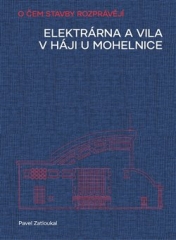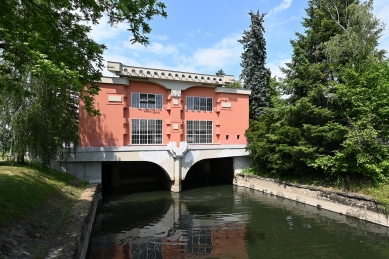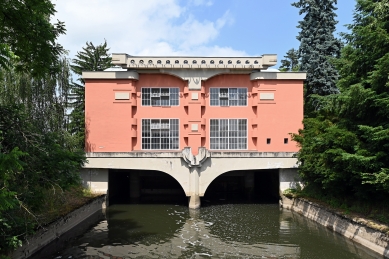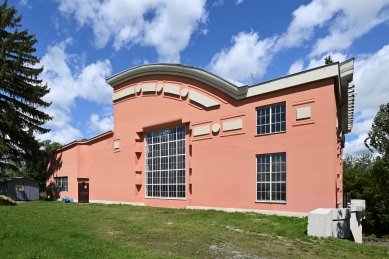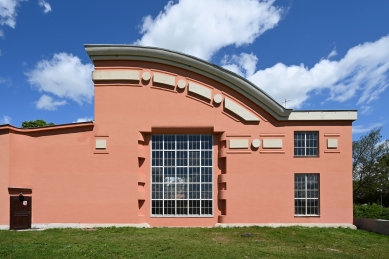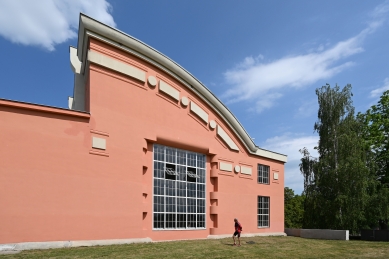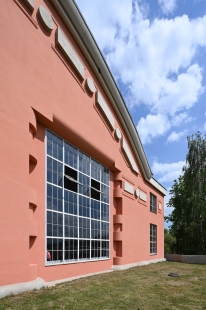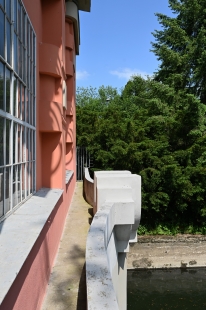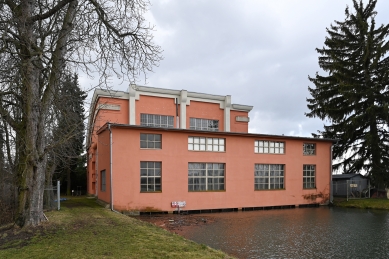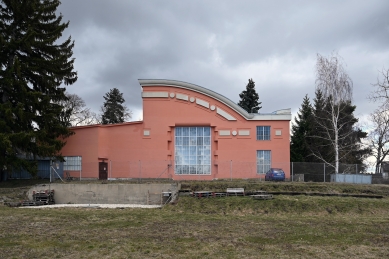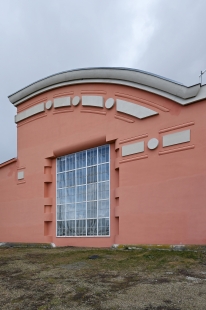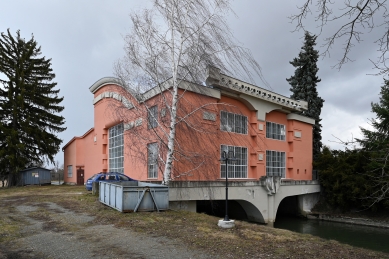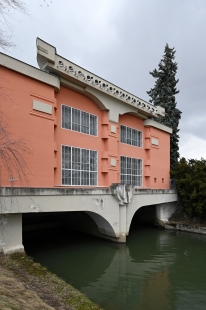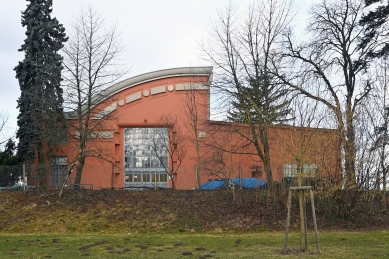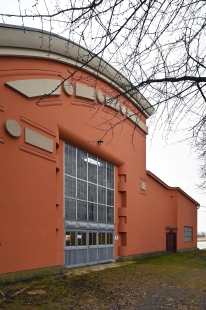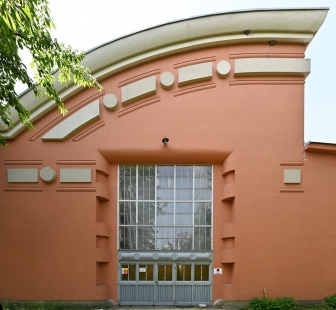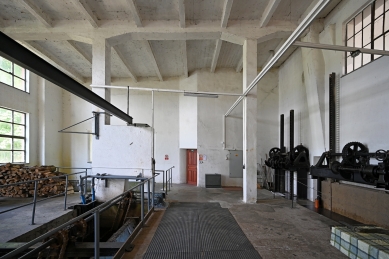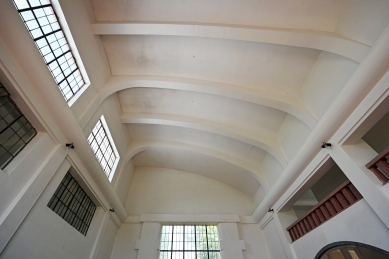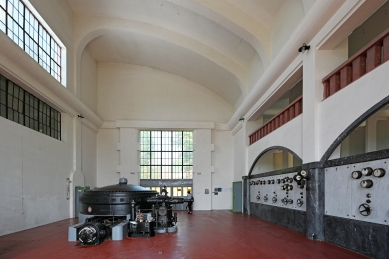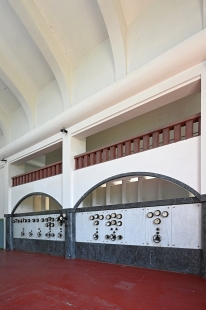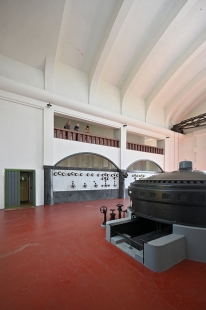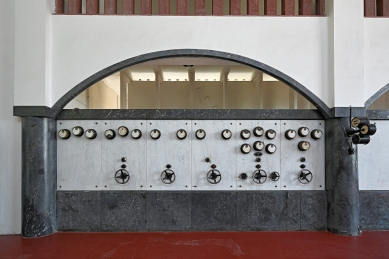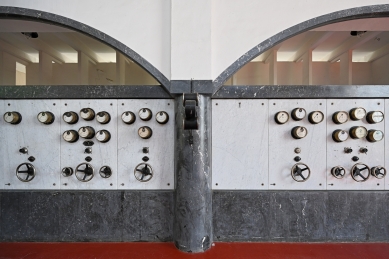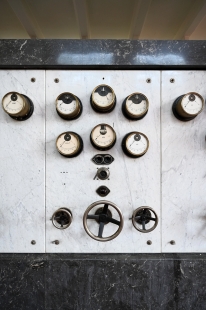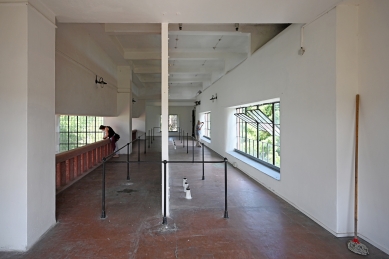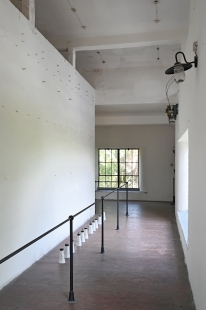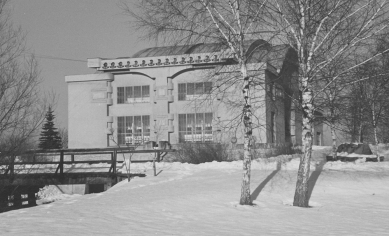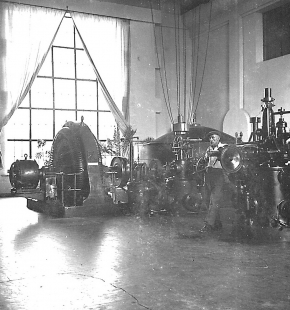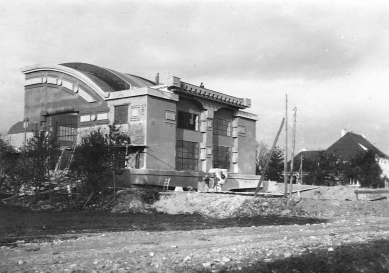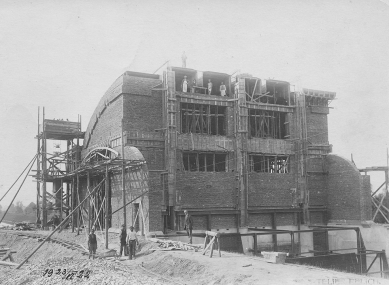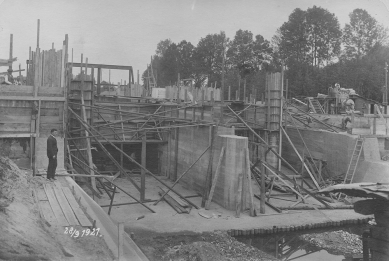
Power Plant in Háj near Mohelnice
<h1>Hydroelectric Power Plant Třeština</h1>

History of the Site
1358 – First mention of the settlement of Háj.
1819 – The Liechtenstein estate sells the Háj Mill to František Švestka, and in the following decades, a number of owners alternate.
1873 – The mill is acquired for the amount of 35,000 gold by Josef and Terezie Plhák from Třeština.
1883 – The Plhák family passes the mill to their son Hubert (1859-1934).
1894 – Hubert Plhák decides to build a power plant in the mill for the purpose of lighting the mill, driving the mill wheels, and powering machines.
1898 – The mill burns down, and the cooperative dairy in Třeština financially helps Hubert to fund the reconstruction. The First Moravian Power Plant Ltd. is founded in the Háj Mill near Mohelnice. It is the very first cooperative power plant in the entire Austro-Hungarian monarchy, and Třeština becomes the first fully electrified village in Moravia.
1909-12 – Hubert Plhák has a late Art Nouveau building of a separate power plant built on the original mill race, supplying electricity to 70 villages.
1919 – Hubert Plhák hands over the original Háj power plant to his sons Radomír and Karel. The eldest son Miroslav acquires the mill with a power plant in Nové Mlýny near Litovel.
History of the New Power Plant
1919 – Construction of a new artificial channel, 320 m long and 12 m wide, begins, and the Plhák family applies for permission to construct an entirely new power plant.
1920 – The Plhák family approaches the prominent architect Pavel Janák (1882-1956) with a request to prepare plans for the new power plant. Pavel Janák presents a design for a three-story residential building connected to the machine room of the power plant at the rear. The building is designed in a national style, including red-blue-white coloring. However, the Plhák family rejects the proposal and subsequently approaches the most prominent Czech architect Jan Kotěra for a project. Due to work obligations, Jan Kotěra cannot accept the request and suggests that the Plhák family commission the project from his most gifted students, Bohuslav Fuchs and Josef Štěpánek. These architects divide the project into two buildings, the power plant and a villa.
1921 – The Plhák family informs the architects that they have definitively decided to use their design, and construction work begins. The construction is carried out by the construction company Bernarda Sychrava from Olomouc, and the construction is documented by photographer Josef Relich from Zábřeh in Moravia.
1945 – The Plhák brothers' business was nationalized under the decree of the president of the republic No. 100/45 Sb.
1970s – A smaller turbine was removed from the power plant, and only one unit is operated.
1996 – As part of the restitution process and privatization, the power plant is returned to the descendants of the original owners.
1998 – The power plant is purchased by a private company.
2008 – The power plant building is declared a national cultural monument for its architectural value.
2020 – A modernization of the power plant technology is carried out at a cost of 8.1 million CZK.
Description of the Power Plant's Structure
The power plant was built on a newly created flow channel. The building has two halls, the northern one serves for water treatment and supplying water to the turbines, while the lower rear part covers the sluices. In the taller central hall is located the turbine. The hall (machine room) is dominated by a wall with a switchboard that is broken through on the first floor by arcades. The hall is illuminated by large factory windows. The main facade of the power plant is symmetrical, with a pillar emerging from the channel to which arms of concrete bases are attached. The axial pilaster culminates in the attic. The basic motif of the side facades is a roof rounded into a quarter circle.
Technical Description of the Current State of the Power Plant
The small hydroelectric power plant Háj is a diversion, flow-through, low-pressure facility on the left bank of the Morava River, river km 284.226. The waterworks utilizes the drop of a solid weir located at the beginning of an extensive river meander of the Morava River. The entire area consists of a solid weir with a gravel pass, an intake channel with inflow sluices, the power plant building, and a drainage channel. Originally, the power plant was equipped with two units with turbines of different sizes, but in the 1970s, the smaller unit was decommissioned without replacement. This was a Francis turbine with a generator with a capacity of 240 kW and a flow rate of 11.1 m³/s made by Českomoravská Kolben-Daněk Blansko. The currently operated larger unit, vertical, axial, right-handed Francis turbine, was installed by the same company in 1932 as an addition. The turbine's flow rate is 13.5 m³/s with a drop of 3 m, and it has a thirteen-blade impeller with a diameter of 2600 mm, and the distribution device has 28 adjustable blades. The operated unit has an electrical output of 280 kW and produces approximately 1,000,000 kWh of electricity annually.
1358 – First mention of the settlement of Háj.
1819 – The Liechtenstein estate sells the Háj Mill to František Švestka, and in the following decades, a number of owners alternate.
1873 – The mill is acquired for the amount of 35,000 gold by Josef and Terezie Plhák from Třeština.
1883 – The Plhák family passes the mill to their son Hubert (1859-1934).
1894 – Hubert Plhák decides to build a power plant in the mill for the purpose of lighting the mill, driving the mill wheels, and powering machines.
1898 – The mill burns down, and the cooperative dairy in Třeština financially helps Hubert to fund the reconstruction. The First Moravian Power Plant Ltd. is founded in the Háj Mill near Mohelnice. It is the very first cooperative power plant in the entire Austro-Hungarian monarchy, and Třeština becomes the first fully electrified village in Moravia.
1909-12 – Hubert Plhák has a late Art Nouveau building of a separate power plant built on the original mill race, supplying electricity to 70 villages.
1919 – Hubert Plhák hands over the original Háj power plant to his sons Radomír and Karel. The eldest son Miroslav acquires the mill with a power plant in Nové Mlýny near Litovel.
History of the New Power Plant
1919 – Construction of a new artificial channel, 320 m long and 12 m wide, begins, and the Plhák family applies for permission to construct an entirely new power plant.
1920 – The Plhák family approaches the prominent architect Pavel Janák (1882-1956) with a request to prepare plans for the new power plant. Pavel Janák presents a design for a three-story residential building connected to the machine room of the power plant at the rear. The building is designed in a national style, including red-blue-white coloring. However, the Plhák family rejects the proposal and subsequently approaches the most prominent Czech architect Jan Kotěra for a project. Due to work obligations, Jan Kotěra cannot accept the request and suggests that the Plhák family commission the project from his most gifted students, Bohuslav Fuchs and Josef Štěpánek. These architects divide the project into two buildings, the power plant and a villa.
1921 – The Plhák family informs the architects that they have definitively decided to use their design, and construction work begins. The construction is carried out by the construction company Bernarda Sychrava from Olomouc, and the construction is documented by photographer Josef Relich from Zábřeh in Moravia.
1945 – The Plhák brothers' business was nationalized under the decree of the president of the republic No. 100/45 Sb.
1970s – A smaller turbine was removed from the power plant, and only one unit is operated.
1996 – As part of the restitution process and privatization, the power plant is returned to the descendants of the original owners.
1998 – The power plant is purchased by a private company.
2008 – The power plant building is declared a national cultural monument for its architectural value.
2020 – A modernization of the power plant technology is carried out at a cost of 8.1 million CZK.
Description of the Power Plant's Structure
The power plant was built on a newly created flow channel. The building has two halls, the northern one serves for water treatment and supplying water to the turbines, while the lower rear part covers the sluices. In the taller central hall is located the turbine. The hall (machine room) is dominated by a wall with a switchboard that is broken through on the first floor by arcades. The hall is illuminated by large factory windows. The main facade of the power plant is symmetrical, with a pillar emerging from the channel to which arms of concrete bases are attached. The axial pilaster culminates in the attic. The basic motif of the side facades is a roof rounded into a quarter circle.
Technical Description of the Current State of the Power Plant
The small hydroelectric power plant Háj is a diversion, flow-through, low-pressure facility on the left bank of the Morava River, river km 284.226. The waterworks utilizes the drop of a solid weir located at the beginning of an extensive river meander of the Morava River. The entire area consists of a solid weir with a gravel pass, an intake channel with inflow sluices, the power plant building, and a drainage channel. Originally, the power plant was equipped with two units with turbines of different sizes, but in the 1970s, the smaller unit was decommissioned without replacement. This was a Francis turbine with a generator with a capacity of 240 kW and a flow rate of 11.1 m³/s made by Českomoravská Kolben-Daněk Blansko. The currently operated larger unit, vertical, axial, right-handed Francis turbine, was installed by the same company in 1932 as an addition. The turbine's flow rate is 13.5 m³/s with a drop of 3 m, and it has a thirteen-blade impeller with a diameter of 2600 mm, and the distribution device has 28 adjustable blades. The operated unit has an electrical output of 280 kW and produces approximately 1,000,000 kWh of electricity annually.
Czech Hydro s.r.o.
The English translation is powered by AI tool. Switch to Czech to view the original text source.
0 comments
add comment


